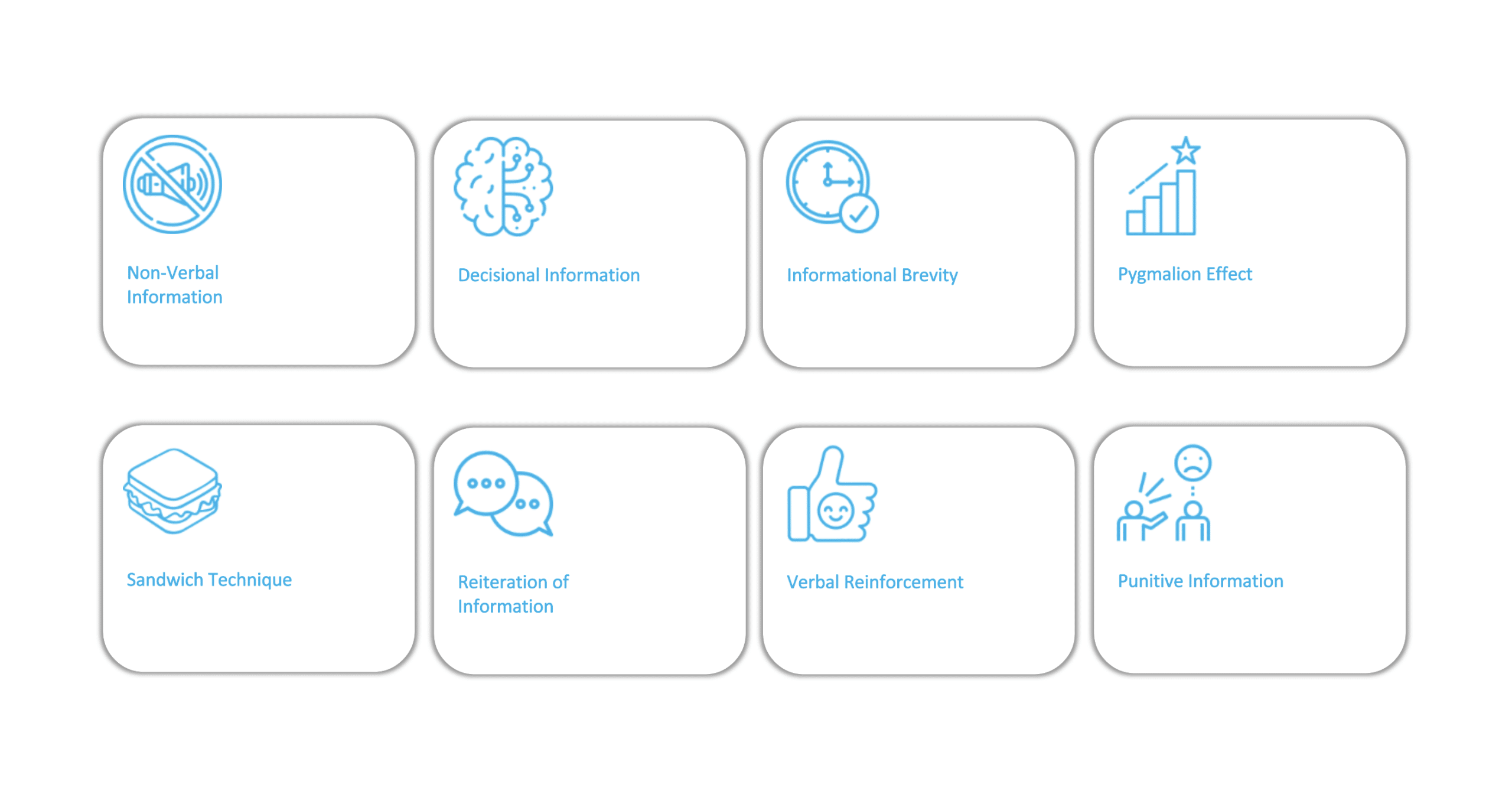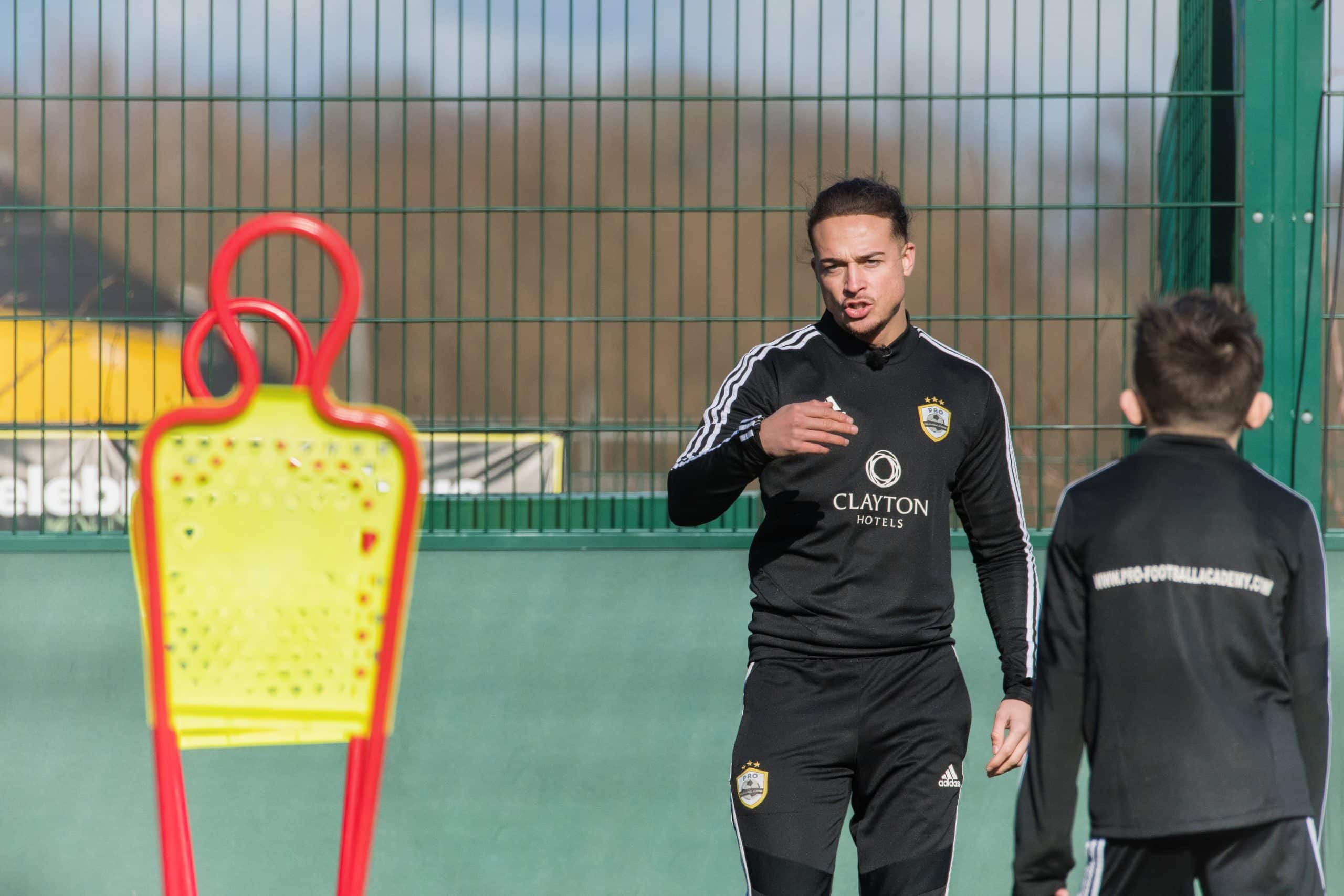In order to provide relevant information to the players, the coach must carefully organise what they are going to say and how they are going to say it so that it reaches the players in the best possible way.
At the MBP Coaches’ School, we consider eight techniques that coaches can use to transfer relevant information to their players during training sessions with the aim of enhancing their cognitive structure. These techniques are as follows:
Image 1. 8 informational techniques used by coaches to convey information to their players. Source: MBP Coaches’ School
1. Non-Verbal Information
This refers to information transmitted through movements, without being verbalised, and although it can be positive, neutral or negative, we recommend alternating the first two registers with our players and the team. For example, applauding a player’s action or putting a hand on their shoulder to show empathy.
Image 2. A coach greeting a player in a friendly manner. Source: Coaches’ Voice
2. Decisional Information
It consists of providing information so that players can make their own decisions, encouraging them to think, reflect and take responsibility for their actions. It is closely related to the guided discovery teaching style. Normally, this information is conveyed through questions related to the training content. For example: What should you do if you have an opponent close by who is pressing you? Where is the ball coming from? Where do you have the greatest advantage? What can you do to help your teammate with the ball?
Image 3. A coach asking players questions about the content practised in the task. Source: Coaches’ Voice
3. Informational Brevity
This refers to the length of the message conveyed by the coach. It is important that messages are brief and concise so that players can understand them easily and have more time to practice during the training session. To achieve this, it is essential to organise the information we need to give to the players in advance. For example, when starting a task, players should know how it works: teams, playing areas, rules and basic scoring.
4. Pygmalion Effect
It is related to the expectations that the coach has and conveys to their players, which will directly influence their confidence, learning and performance. Therefore, it is appropriate to encourage and pass on realistic expectations that are tailored to each player’s abilities, as our beliefs about them influence their self-perception and actions.
5. Sandwich Technique
This is a technique for giving corrective feedback to players. To do this, the coach must take three key aspects into account: first, they must give the player a positive message about the action they have just performed. Next, they will give them a corrective message to help them reflect on their recent action; and finally, they will give them a message of encouragement to keep working hard. For example: Juan, good shot after the cross! But next time, pay attention to how you position your body before striking the ball. Come on, I’m sure you’ll score next time!
6. Reiteration of Information
This refers to the information that the coach repeats during the task. Depending on the phase (organisational, adjustment, and teaching-learning), this information will focus on the rules or on the main content and concepts. For example: Remember that no defenders are allowed in that space! Which way should you turn to get out of the pressure? What should you do if the defender presses you?
Image 4. Coordination circuits, general coordination games, or analytical exercises are tasks where the coach must place great emphasis on the content and concepts being trained as they will be repeated a large number of times. Source: Coaches’ Voice
7. Verbal Reinforcement
Retrospective verbal information or feedback can be positive or negative. It is therefore recommended that for every three positive reinforcements, one negative reinforcement can be given. If, as coaches, we overuse negative or corrective feedback, we run the risk of players becoming less receptive to corrections. This verbal reinforcement should always be given after an action performed by the player; therefore, they will be more receptive after a success than after a mistake.
8. Punitive Information
This type of information relates to shouting, excessive tone of voice and foul language. These are comments that can undermine players’ confidence and well-being, so we must avoid using them at all costs. For example: How many times have I told you to pass the ball?!; Come on, we need to move the ball around faster!; We won’t win any matches playing like this!
In short, every coach should be familiar with these eight techniques for transmitting information in order to tailor messages to the cognitive needs of players. The better prepared we are with the message and information we need to convey to our players, the easier it will be to interact with them and the better they will understand. So, are you ready to apply these techniques in your training sessions?











